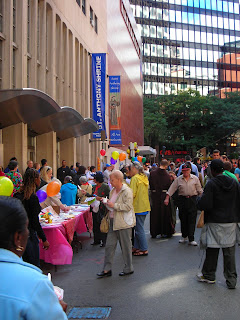
Like many other Catholic dioceses in the United States, the Archdiocese of Boston, MA, is issuing guidelines to protect parishioners from being infected by the H1N1 flu. The guidelnes, which are to take effect October 31, 2009, are:
v The Holy Water fonts are to be drained, cleaned with a disinfecting soap, and re-filled with holy water on a regular basis. Please note that old holy water should be disposed of in the sacrarium.
v The distribution of the Precious Blood for the faithful is suspended, with the exception of those who must receive from the cup due to medical reasons. The faith of the Church teaches that Christ, whole and entire, is received even under only one species.
v The exchange of the Sign of Peace is to be offered without any physical contact. If the priest celebrant chooses to extend the invitation for the sign of peace, the faithful, instead of a handshake, may bow to the persons nearby.
v While the faithful retain the option of receiving Holy Communion on the tongue or in the hand, all ministers of Holy Communion are advised to distribute the consecrated hosts with care, being cautious not to touch the tongue or the hand of the communicant.
v Parishioners should be reminded that if they are ill or suspect they are ill with a contagious illness, they are not bound by the Sunday Mass obligation. They should remain at home and return to church when they are well.
v The distribution of the Precious Blood for the faithful is suspended, with the exception of those who must receive from the cup due to medical reasons. The faith of the Church teaches that Christ, whole and entire, is received even under only one species.
v The exchange of the Sign of Peace is to be offered without any physical contact. If the priest celebrant chooses to extend the invitation for the sign of peace, the faithful, instead of a handshake, may bow to the persons nearby.
v While the faithful retain the option of receiving Holy Communion on the tongue or in the hand, all ministers of Holy Communion are advised to distribute the consecrated hosts with care, being cautious not to touch the tongue or the hand of the communicant.
v Parishioners should be reminded that if they are ill or suspect they are ill with a contagious illness, they are not bound by the Sunday Mass obligation. They should remain at home and return to church when they are well.
I wonder how soon, along with the water and wine cruets, there is going to be hand sanitizer on the altar.











